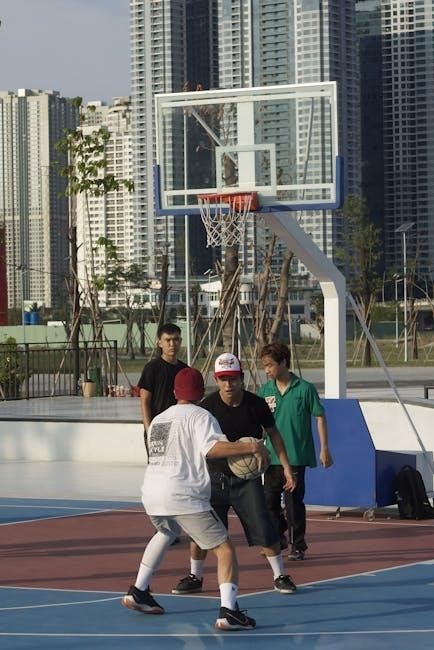Dynamic Neuromuscular Stabilization is a rehabilitation approach developed by Pavel Kolar, using
developmental kinesiology principles
to activate the integrated stabilizing system of the spine and achieve improved function naturally always․
Definition and Principles
Dynamic Neuromuscular Stabilization is defined as a rehabilitation approach that focuses on the activation of the integrated stabilizing system of the spine․ The principles of DNS are based on developmental kinesiology, which emphasizes the importance of optimal joint positioning and movement patterns․ According to Professor Pavel Kolar, the founder of DNS, the approach aims to achieve improved function and stability of the spine and surrounding muscles․ The principles of DNS are applied through a series of exercises and techniques that target the deep stabilizing muscles of the spine, including the diaphragm and other core muscles․ By activating these muscles, DNS helps to improve posture, reduce pain and inflammation, and enhance overall movement and function․ The principles of DNS are widely used in physical therapy and rehabilitation settings to treat a range of conditions, including back pain and sports injuries․ DNS is a holistic approach that considers the entire body․
Founder and Background
Professor Pavel Kolar is the founder of Dynamic Neuromuscular Stabilization, a physiotherapy technique based on developmental kinesiology principles․ He is a physiotherapist, pediatrician, and professor of physiology in Prague, Czech Republic․ Kolar’s work is focused on the development of optimal movement patterns and the activation of the integrated stabilizing system of the spine․ His approach has been widely adopted in physical therapy and rehabilitation settings, and he has written extensively on the topic of DNS․ Kolar’s background in pediatric medicine and physiology has informed his approach to DNS, which emphasizes the importance of early developmental patterns in shaping movement and function․ He has developed a range of exercises and techniques that are used to treat a range of conditions, including back pain and sports injuries, and has trained many practitioners in the DNS approach․ Kolar continues to teach and lecture on DNS․
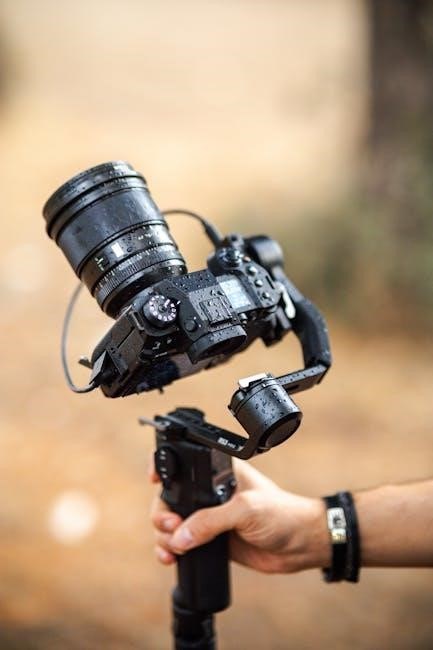
DNS Exercises and Techniques
DNS exercises and techniques are used to activate the integrated stabilizing system naturally always with proper training and instruction online every day․
DNS Exercise I
DNS Exercise I is a fundamental exercise in the Dynamic Neuromuscular Stabilization approach, focusing on the activation of the deep stabilizing system․ This exercise is designed to promote optimal joint positioning and movement patterns, essential for maintaining spinal stability and preventing injuries․ The exercise involves specific movements and breathing techniques, which help to activate the diaphragm and engage the core muscles․ By practicing DNS Exercise I, individuals can improve their posture, reduce muscle tension, and enhance their overall functional movement․ The exercise can be modified to suit different fitness levels and needs, making it accessible to a wide range of individuals․ With regular practice, DNS Exercise I can help to improve proprioception, balance, and coordination, leading to better overall physical function and reduced risk of injury․ Regular practice is essential to achieve optimal results․
Trunk Stabilization and Self-Treatment
Trunk stabilization is a crucial aspect of Dynamic Neuromuscular Stabilization, focusing on the activation of the deep stabilizing muscles of the trunk․ This approach enables individuals to achieve optimal trunk stability, essential for maintaining good posture, preventing injuries, and enhancing overall physical function․ The self-treatment aspect of DNS involves a series of exercises and techniques that individuals can practice independently to improve their trunk stability and overall well-being․ These exercises are designed to promote optimal joint positioning, movement patterns, and breathing techniques, leading to improved proprioception, balance, and coordination․ By practicing trunk stabilization and self-treatment exercises, individuals can take an active role in maintaining their physical health and preventing injuries․ Regular practice can help to reduce muscle tension, improve posture, and enhance overall functional movement, leading to better overall physical function and reduced risk of injury, with improved quality of life․
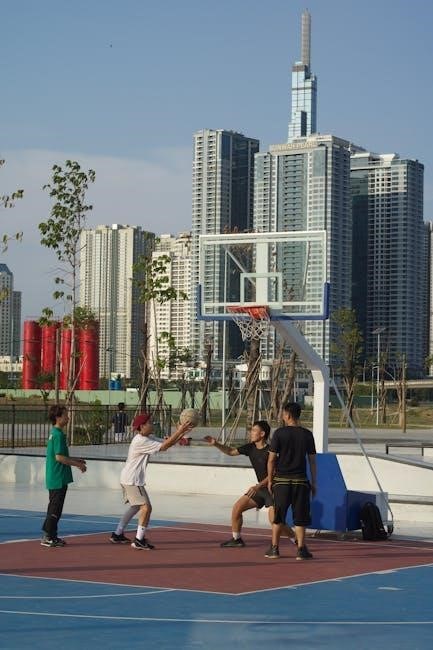
Applications and Benefits
Dynamic Neuromuscular Stabilization offers various applications and benefits naturally always improving function and movement patterns effectively every time with optimal results and outcomes for patients and athletes alike always․
Athletic Rehabilitation and Development
Dynamic Neuromuscular Stabilization is an approach to athletic rehabilitation and development based on principles of developmental kinesiology, focusing on optimal joint positioning and movement patterns․
This approach is used to improve function and performance in athletes, by training the integrated stabilizing system of the spine and achieving optimal activation of the diaphragm․
The goal of DNS in athletic rehabilitation is to restore normal movement patterns and prevent future injuries, by addressing the underlying causes of dysfunction and promoting optimal movement strategies․
DNS exercises and techniques are designed to be progressive and challenging, allowing athletes to gradually increase their strength, flexibility, and coordination․
By incorporating DNS into their training programs, athletes can improve their overall performance and reduce their risk of injury, making it a valuable tool for athletic rehabilitation and development․
DNS is a valuable resource for athletes and coaches looking to improve performance and prevent injury․
Sports Rehabilitation
Dynamic Neuromuscular Stabilization is used in sports rehabilitation to restore function and prevent injury, with a focus on optimal movement patterns and joint positioning․
The approach is based on developmental kinesiology principles, aiming to activate the integrated stabilizing system of the spine and achieve improved function․
DNS is used to treat various sports-related injuries, including those affecting the spine, joints, and muscles․
The goal of DNS in sports rehabilitation is to promote optimal movement strategies, reducing the risk of future injuries and improving overall athletic performance․
DNS exercises and techniques are designed to be sport-specific, allowing athletes to gradually return to their sport while minimizing the risk of re-injury․
By incorporating DNS into their rehabilitation programs, athletes can achieve faster recovery times and improved outcomes, making it a valuable tool for sports rehabilitation professionals․
DNS is a effective approach for sports rehabilitation, promoting optimal movement and reducing injury risk․
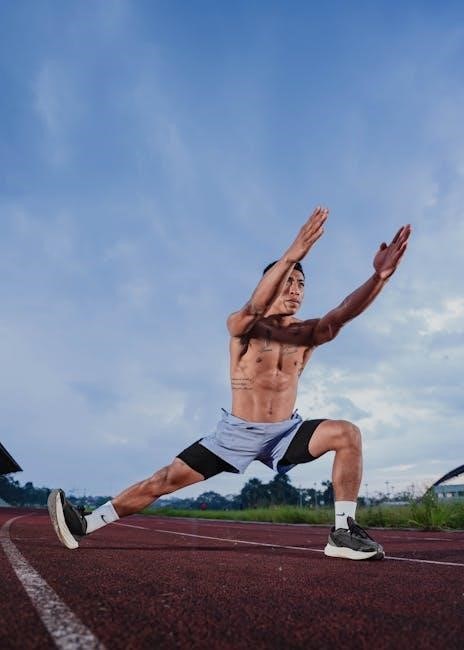
Case Studies and Research
Studies and research papers are available online as pdf files discussing Dynamic Neuromuscular Stabilization exercises and techniques in detail always naturally online․
Chronic Migraine Sufferer
A case study utilizing Dynamic Neuromuscular Stabilization therapy to control symptoms of a chronic migraine sufferer was published in the Journal of Bodywork and Movement Therapies․ The study discussed the use of DNS exercises to alleviate migraine symptoms․ A pdf file of the study is available online for download․ The research paper presents a detailed analysis of the effects of DNS on chronic migraine sufferers․ The study’s findings suggest that DNS can be an effective treatment for chronic migraines․ The researchers used a combination of DNS exercises and other therapies to achieve optimal results․ The study’s results are promising and suggest that DNS can be a valuable tool in the treatment of chronic migraines․ The pdf file of the study provides more information on the research methodology and findings․ The study contributes to the growing body of research on the effectiveness of DNS in treating various health conditions․
Evolution and Development
Dynamic Neuromuscular Stabilization is an evolving concept in the field of rehabilitation, with ongoing research and development of new exercises and techniques․ The approach has undergone significant evolution since its introduction, with a growing body of evidence supporting its effectiveness․ A pdf file detailing the evolution and development of DNS is available online, providing insight into the history and progression of the approach․ The development of DNS has been influenced by various factors, including advances in developmental kinesiology and the work of Professor Pavel Kolar․ As research continues to emerge, DNS is likely to undergo further evolution and refinement, leading to the development of new and innovative exercises and techniques․ The ongoing evolution of DNS is a testament to its dynamic and adaptive nature, ensuring it remains a cutting-edge approach in the field of rehabilitation․ New studies and research papers are being published regularly․
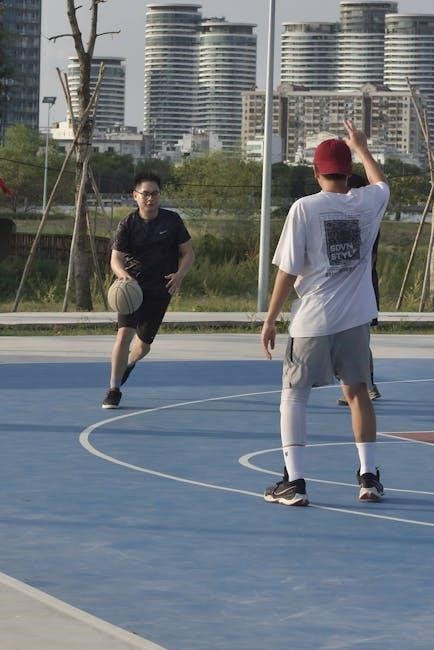
and Resources
Dynamic Neuromuscular Stabilization resources are available online as pdf files and research papers always naturally for free download instantly every time․
Availability of Resources
Dynamic Neuromuscular Stabilization resources are widely available online, including pdf files and research papers that can be downloaded for free․ These resources provide valuable information on DNS exercises and techniques, as well as its applications and benefits․ Many websites offer free downloads of DNS-related materials, including exercise guides and research articles․ Additionally, online courses and workshops are also available for those who want to learn more about DNS and its applications․ The internet has made it possible for people to access DNS resources from anywhere in the world, at any time; With just a few clicks, one can access a wealth of information on DNS, including its principles, exercises, and benefits․ This has made it easier for people to learn about DNS and incorporate it into their daily lives․ Overall, the availability of DNS resources online has made it more accessible to people all over the world․
Future Directions
As research on Dynamic Neuromuscular Stabilization continues to grow, future directions for the field are likely to include further exploration of its applications in various areas of rehabilitation and sports performance․ The development of new DNS exercises and techniques is also expected, as well as the creation of more online resources and training programs․ Additionally, there may be an increased focus on the use of technology, such as mobile apps and virtual reality, to enhance DNS training and make it more accessible to a wider range of people․ Overall, the future of DNS looks promising, with many opportunities for growth and development․ New research studies and clinical trials are likely to be conducted, providing more insight into the effectiveness of DNS and its potential benefits․ This will help to further establish DNS as a valuable approach to rehabilitation and sports performance․
